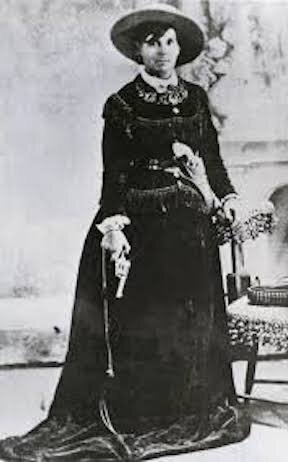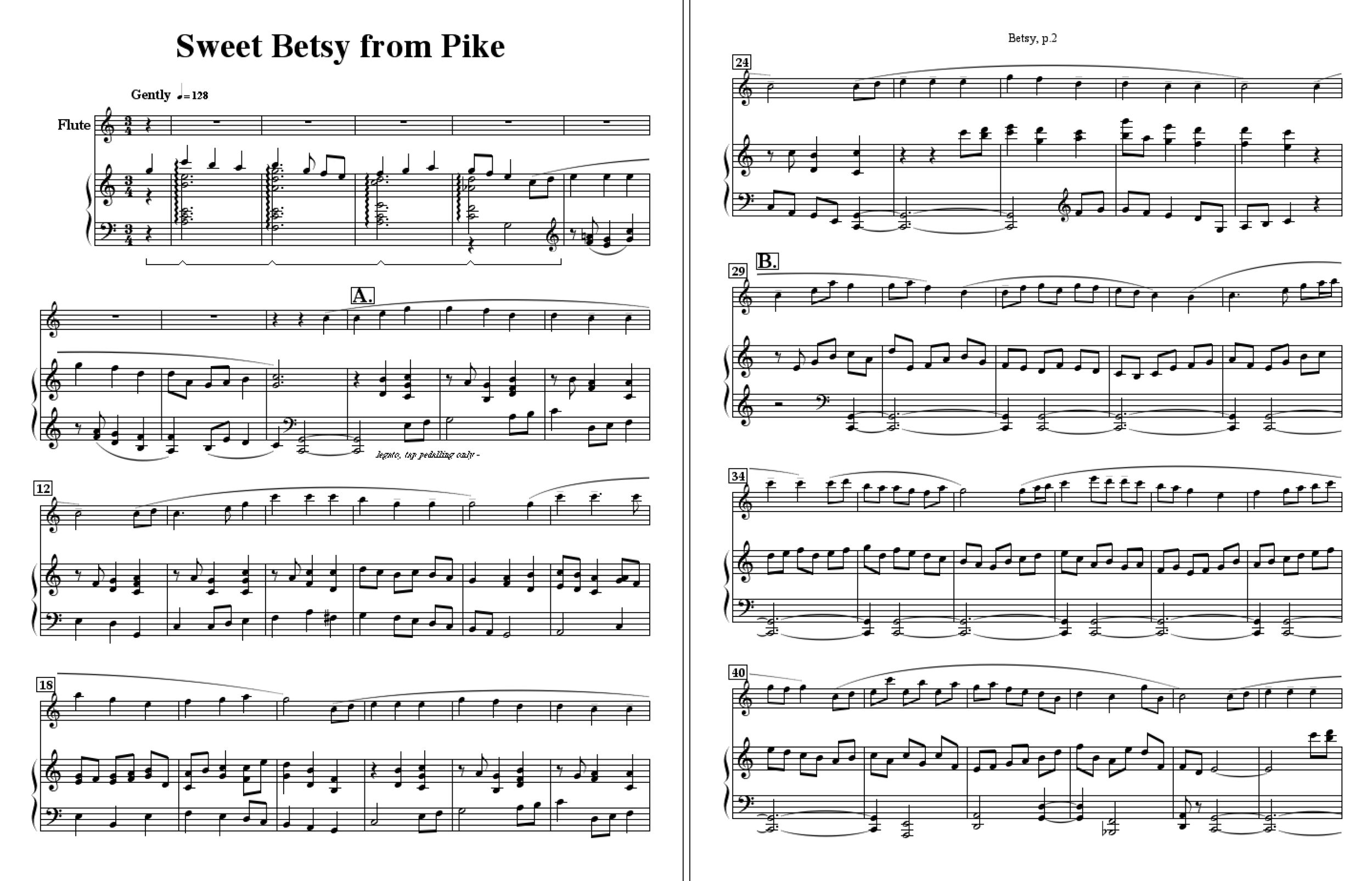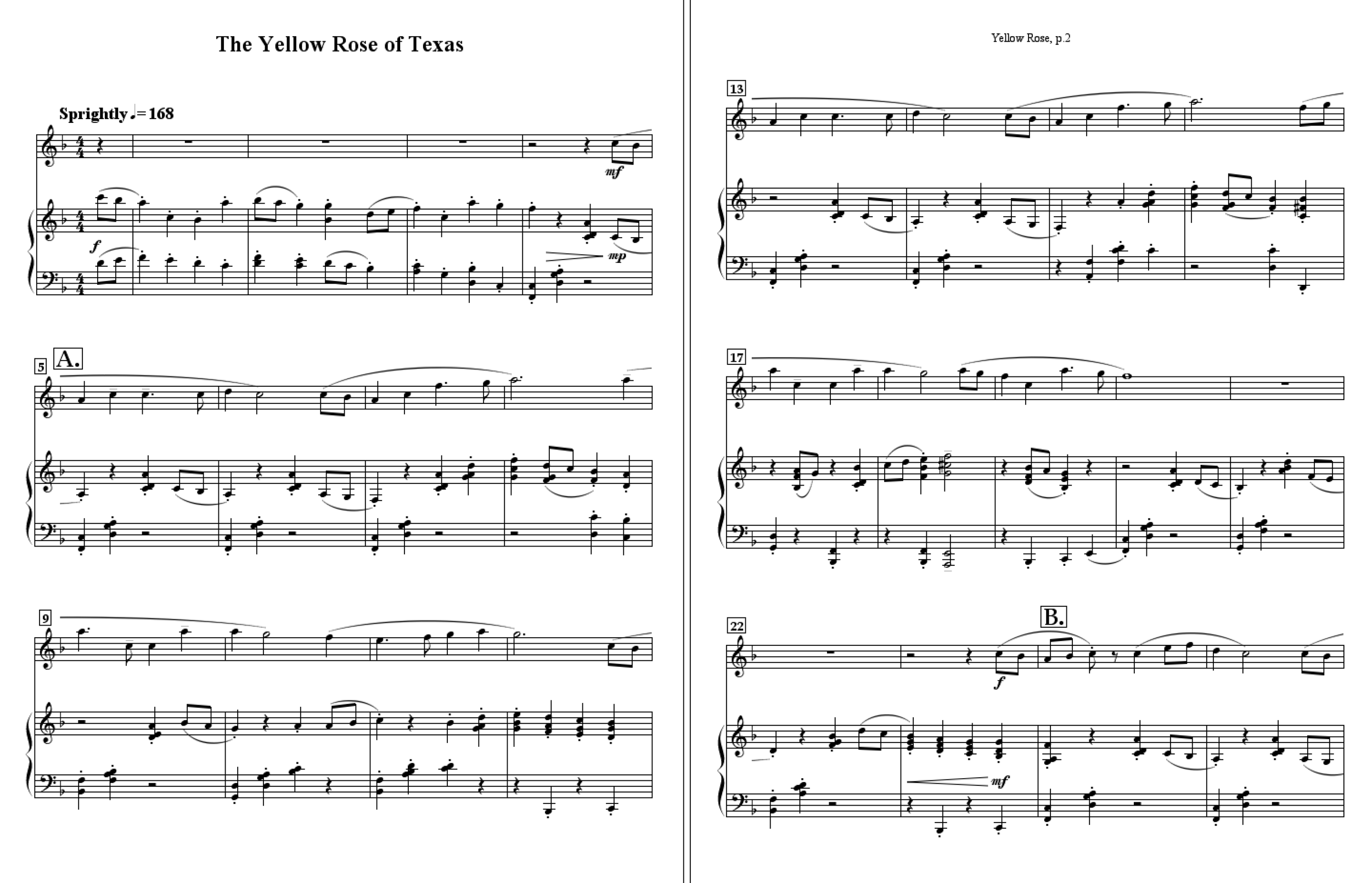Women of the West (2020)
In the soundtrack of the American West in the 19th Century, migrants, ranchers, miners, and frontiersmen whiled away long and tedious hours singing a wide assortment of ballads, cowboy songs, and other ditties. It was a rich oral tradition that was occasionally written down, and many melodic and textual variations were improvised. Women, however, were seldom represented. Here are a few pioneer & cowboy songs in which women were indeed the central figures, most of which were strong women making their way in a man’s world.
$9.95, available from Alfred. Order here.
A cowgirl, circa 1909
A studio portrait of Belle Starr probably taken in Fort Smith in the early 1880s.
Sweet Betsy?
Fair Fannie Moore is a British murder ballad that found its way across North America to become a cowboy song. This rather gruesome narrative genre can include songs sung from the perspective of the murderer, the victim, or a third party; some express some sympathy for the killer. Fannie Moore has two suitors – one rich and one poor. She loves and marries the poor shepherd boy Henry and spurns the “haughty” Randell, who stabs her in revenge. Randall is hanged for his crime. Henry goes mad and is eventually buried next to Fannie.
Yonder stands a cottage, all deserted and alone; its paths are neglected, with grass overgrown.
Go in and you will see some dark stains on the floor -- Alas! it is the blood of fair Fannie Moore.
Belle Starr was born Myra Belle Shirley and educated at an elite school for girls where she was given lessons in piano and classical languages. Belle’s family moved from Missouri to Texas in 1864, where she became acquainted with Jesse James, Cole Younger, and other outlaws. Through times spent in California, Oklahoma, and Texas, she took many lovers, many of them outlaws, eventually becoming an accomplished horse and cattle thief. In the late 1870’s she married a Cherokee named Sam Starr; they were arrested multiple times for horse thievery and various other crimes. Belle Starr was shot to death by an anonymous assassin at age 41 in 1889. She became famous due to a dime novel, Bella Starr, the Bandit Queen, or the Female Jesse James, which fictionalized her life.
Eight lovers they say combed your waving black hair, eight men knew the feel of your dark velvet waist.
Eight men heard the sounds of your tan leather skirt, eight men heard the bark of the guns that you wore.
Flora, Lily of the West is a traditional British and Irish folk song. In the American version a man travels to Louisville and falls in love with a woman named Flora (or Mary or Molly), the eponymous Lily of the West. He catches her being unfaithful to him, and in a fit of rage stabs the man she is with, and is subsequently imprisoned. In spite of this, he finds himself still in love with her.
The trial was held, I made my plea, but 'twas of no avail, now I await the hangman in a stinkin' rotten jail.
But though I give my all away, and though my life is messed, I love my faithless Flora, the Lily of the West.
Sweet Betsy from Pike was first published in an 1858 songbook called Put's Golden Songster, which featured songs dealing with the 1849 California gold rush. It is based on an Irish melody that most came to the U.S. during the potato famine. There is a Pike County in both Missouri and Illinois from where many California-bound gold seekers began their land journeys. Many, many verses exist, making very different endings possible – foreboding (arriving in Hangtown, renowned for the number of hangings there), bitter (Ike & Betsy get divorced), or happy and domestic (they have 13 children, all named George). But in all, Betsy comes across as a strong and independent woman.
Now don't you remember sweet Betsy from Pike, who crossed the big mountains with her husband Ike?
With two yoke of oxen, a big yeller dog, a tall Shanghai rooster and one spotted hog.
Oh, My Darling Clementine - Multiple variations of this song exist, but all center around Clementine, the daughter of a "miner forty-niner" and the singer's lover. One day while performing routine chores, Clementine trips and falls in the water and drowns, as her lover is unable to swim and unwilling to attempt to rescue her. The lyrics were written by Percy Montrose in 1884, based on an earlier song called "Down by the River Liv'd a Maiden". The origin of the melody is unknown. It has been claimed that the melody was from an old Spanish ballad made popular by Mexican miners during the California Gold Rush. Here the melody is mostly changed from its original 3/4 to 4/4 in the spirit of a lament.
Oh my Darling, Oh my Darling, Oh my Darling Clementine. You are lost and gone forever, Dreadful sorry, Clementine.
The Yellow Rose of Texas The first recorded copy of this folksong was handwritten on a plain piece of paper about 1836; this copy was most probably transcribed either shortly before or after General Sam Houston lead his brigade of Texas loyalists against the army of General Antonio Lopez de Santa Anna at the Battle of San Jacinto on April 21, 1836. The lyrics tell of a black American (presumably a soldier from Tennessee) who left his sweetheart (a "yellow rose") and yearns to return to her side. "Yellow" was a term given to Americans of mixed race in those days, most commonly mulattos. And "Rose" was a popular feminine nineteenth century name; frequently used in songs and poems as a glorification of young womanhood. There is some thought that the Yellow Rose of Texas was one Emily West, who had been captured to be a concubine by Santa Anna; supposedly, she distracted him in bed, giving Sam Houston the element of surprise in his attack.
She’s the sweetest rose of color this darky every knew; her eyes are bright as diamonds, they sparkle like the dew.
You may talk about dearest May and sing of Rosa Lee, but the yellow rose of Texas beats the belles of Tennessee.









